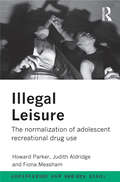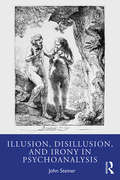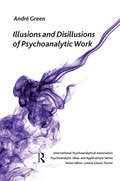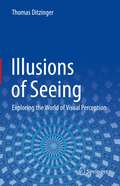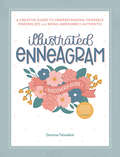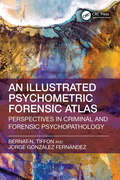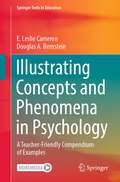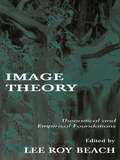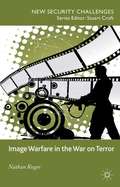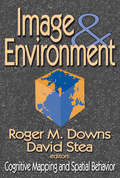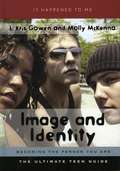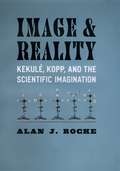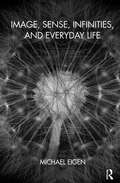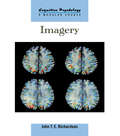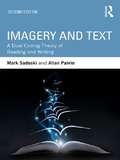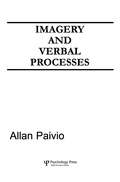- Table View
- List View
Illegal Leisure (Adolescence and Society)
by Judith Aldridge Fiona Measham Howard ParkerIllegal Leisure offers a unique insight into the role drug use now plays in British youth culture. The authors present the results of a five year longitudinal study into young people and drug taking. They argue that drugs are no longer used as a form of rebellious behaviour, but have been subsumed into wider, acceptable leisure activities. The new generation of drug user can no longer be seen as mad or bad or from subcultural worlds - they are ordinary and everywhere. Illustrated throughout with interview material, Illegal Leisure shows how drug consumption has become normalised, and provides a well-informed analysis of the current debate.
Illegal Leisure Revisited: Changing Patterns of Alcohol and Drug Use in Adolescents and Young Adults (Adolescence and Society)
by Lisa Williams Judith Aldridge Fiona MeashamThis book updates the progress into adulthood of the cohort of fourteen-year-olds who were recruited and tracked until they were eighteen years old. Illegal Leisure (1998) described their adolescent journeys and lifestyles, focusing on their early regular drinking and extensive ‘recreational’ drug use. This new edition revisits these original chapters, providing commentaries around them to discuss current implications of the original publication, plus documenting and discussing the group at twenty-two and twenty-seven years of age. Illegal Leisure Revisited positions the journeys of these twenty-somethings against the ever-changing backdrop of a consumption-oriented leisure society, the rapid expansion of the British night-time economy and the place of substance use in contemporary social worlds. It presents to the reader the ways in which these young people have moved into the world of work, long-term relationships and parenthood, and the resulting changes in the function and frequency of their drinking and drug-use patterns. Amid dire public health warnings about their favourite intoxicants, and with the growing criminalisation of a widening array of recreational drugs, the book revisits these young people as they continue as archetypal citizens in a risk society. The book is ideal reading for researchers and undergraduate students from a variety of fields, such as developmental and social psychology, sociology, criminology, cultural and health studies. Professionals working in criminal justice, health promotion, drugs education, harm reduction and treatment will also find this book an invaluable resource.
Illegal Peace in Africa: An Inquiry into the Legality of Power Sharing with Warlords, Rebels, and Junta
by Jeremy I. LevittAfrican states have become testing grounds for Western conflict-resolution experiments, particularly power-sharing agreements, supposedly intended to end deadly conflict, secure peace, and build democracy in divided societies. This volume examines the legal and political efficacy of transitional political power-sharing between democratically constituted governments and the African warlords, rebels, or junta that seek to violently unseat them. What role does law indicate for itself to play in informing, shaping, and regulating peace agreements? This book addresses this question and others through the prism of three West African case studies: Liberia, Sierra Leone, and Guinea-Bissau. It applies the Neo-Kadeshean Model of analysis and offers a framework for a 'Law on Power-sharing. ' In a field dominated by political scientists, and drawing from ancient and contemporary international law, this book represents the first substantive legal critique of the law, practice, and politics of power sharing.
Illness and Enlightenment: Exploring Tibetan Perspectives on Madness in Text and Everyday Life
by Susannah DeaneTibetan understandings of nyoné — ‘madness’— encompass a broad range of concepts. Perspectives on the causation and treatment of madness as an illness are informed by Tantric and medical understandings of mind-body structure and (dys)functioning, as well as people’s relationships with non-human entities. In addition, ‘madness’ may be seen as a sign of enlightenment in the case of some Tantric practitioners. Based on ethnographic fieldwork in the Tibetan region of Amdo in northwest China, as well as examination of Tibetan medical and religious texts, Illness and Enlightenment explores the multi-faceted concept of nyoné through key Tibetan concepts of wind, heart, and mind, as well as human-spirit relationships.
Illumination in the Flatwoods: A Season With the Wild Turkey
by Joe HuttoThe acclaimed account of an astonishing human-turkey relationship. The author describes how he hatched two clutches of wild turkey eggs in an incubator and raised the poults to maturity. Imprinting on him from the moment they hatched, the turkeys fully accepted their human parent into their world. Hutto records their explorations together through fields and woods and the development of their communication and mutual awareness. Along the way he reflects upon the nature of consciousness and the place of humans and animals in the environment.
Illusion and Reality: The Meaning of Anxiety
by David SmailThis work challenges the notion that anxiety and depression amount to a mental illness denoting that something is wrong with the individual sufferer. Instead, anxiety and depression are described as perfectly rational responses to difficulties in the sufferer's world, experienced subjectively by that person. An essential contrast is drawn between objective conceptions of normality (what reality ought to be as per commercial and other objectifying sources) and the reality of the individual's subjective experience of the world (abuse, unemployment, and so on). Chapters include tackling the myth of normality; examining shyness; and analysing the way in which assumptions behind the use of language can foster anxiety and depression. The book's primary purpose is to explain the meaning of anxiety as experienced by the sufferer. These insights also lead to a view, by way of secondary purpose, that the role of the therapist is not in 'curing' the individual, but rather to negotiate demystification and to provide insight into the effects of the problems in the sufferer's world, based on the sufferer and the therapist's shared subjective understanding.
Illusion, Disillusion, and Irony in Psychoanalysis
by John SteinerIllusion, Disillusion, and Irony in Psychoanalysis explores and develops the role of illusion and daydream in everyday life, and in psychoanalysis. Using both clinical examples and literary works, idealised illusions and the inevitable disillusion that is met when reality makes an impact, are carefully explored. Idealised phantasies which involve a timeless universe inevitably lead to disillusion in the face of reality which introduces an awareness of time, ageing, and eventually death. If the illusions are recognised as phantasy rather than treated as fact, the ideal can be internalised as a symbol and serve as a measure of excellence. Steiner shows that the cruelty of truth needs to be recognised, as well as the deceptive nature of illusion, and that relinquishing omnipotence is a critical and difficult developmental task that is relived in analysis. Illusion, Disillusion, and Irony in Psychoanalysis will be of great use to the psychoanalyst or psychotherapist seeking to understand the patient’s withdrawal into a phantasy world, and the struggle to allow the impact of reality.
Illusions and Disillusions of Psychoanalytic Work (The International Psychoanalytical Association Psychoanalytic Ideas and Applications Series)
by Andre GreenIllusions and Disillusions of Psychoanalytic Work recounts and explores the disappointing and sometimes tragic evolutions of the treatments of certain patients who are resistant to the effects of analytic work. In this book the author reports cases taken from his own experience and that of his collaborators. The author points out moreover, that such cases have never been absent from the series of analysands that he has treated, from the early days of his practice up until today, without minimizing his counter-transference reactions or their possible impact on these disappointing evolutions.
Illusions of Seeing: Exploring the World of Visual Perception
by Thomas DitzingerWhy do we need two eyes? Why are all cats grey at night and appear to move faster the day? Why is the sky blue and the setting sun red? This book explains the multifaceted nature of perception, and discusses the mysteries of vision. It provides readers with experiments to help them discover optical illusions and the features of their own perception. Illusions of Seeing begins with a discussion on the essence of light and its perception to the human eye. It presents a comprehensive overview of the basic laws of human perception as well as the fundamentals of good gestalt. Subsequent chapters discuss geometric-optical illusions; the perception of form, brightness, and translucency and their interaction with each other; ambiguous perception, color vision, spatial vision. The book ends with a discussion of the perception of motion and its interaction with color, form, and spatial depth with a full chapter devoted to illusions in our everyday life. Consider this your travel guide in the marvelous world of sight, to experience a completely individual way to understand and improve your own perception.Illusions of Seeing will be of interest to psychologists, physicists, biologists, and undergraduate and graduate students within the field of cognitive psychology.
Illusions of a Future: Psychoanalysis and the Biopolitics of Desire
by Kate SchechterA pioneering ethnography of psychoanalysis, Illusions of a Future explores the political economy of private therapeutic labor within industrialized medicine. Focusing on psychoanalysis in Chicago, a historically important location in the development and institutionalization of psychoanalysis in the United States, Kate Schechter examines the nexus of theory, practice, and institutional form in the original instituting of psychoanalysis, its normalization, and now its "crisis." She describes how contemporary analysts struggle to maintain conceptions of themselves as capable of deciding what psychoanalysis is and how to regulate it in order to prevail over market demands for the efficiency and standardization of mental health treatments.In the process, Schechter shows how deeply imbricated the analyst-patient relationship is in this effort. Since the mid-twentieth century, the "real" relationship between analyst and patient is no longer the unremarked background of analysis but its very site. Psychoanalysts seek to validate the centrality of this relationship with theory and, through codified "standards," to claim it as a privileged technique. It has become the means by which psychoanalysts, in seeking to protect their disciplinary autonomy, have unwittingly bound themselves to a neoliberal discourse of regulation.
Illustrated Enneagram: A Creative Guide to Understanding Yourself, Finding Joy & Being Awesomely Authentic
by Deanna TalwalkarIncrease joy, reduce stress, and learn how to live more authentically with this charmingly illustrated guide to the popular (and keenly accurate) Enneagram personality-profiling system. If you love taking personality quizzes and are interested in self-development, don’t miss this easy and accessible guide to the Enneagram. Take the quiz provided to find out which type best describes you: • Type 1: The Idealist • Type 2: The Giver • Type 3: The Performer • Type 4: The Romantic • Type 5: The Observer • Type 6: The Supporter • Type 7: The Adventurer • Type 8: The Protector • Type 9: The Mediator In this book: • Get tailored tips for living your best life by learning what motivates your behavior • Learn about the nine Enneagram personality profiles through charming illustrations • Learn how to communicate with others effectively • Get to the root of what you need to live more authentically • BONUS: Spark joy in everyday life with 16 mini pull-out postcards Once you’ve learned about yourself, be sure to share the book with friends and family to improve the important relationships in your life!
Illustrated Psychometric Forensic Atlas: Perspectives in Criminal and Forensic Psychopathology
by Bernat-N. Tiffon Jorge Gonzalez FernandezOriginally published in Spanish in 2022 by Libreria Bosch, Barcelona, An Illustrated Psychometric Forensic Atlas is a one-of-a-kind book made available in English for the first time. This unique work is highly illustrated with full-color images, providing medico-legal examinations related to various, primarily violent, crime cases, which are of forensic psychological interest.The book provides extensive details of such cases, including the background circumstances, psychological assessments and – in some cases – official clinical diagnoses, as well as numerous photos that illustrate what police, investigators and medical examiners discovered during crime scene and autopsy inquiries. While the coverage largely focuses on the details surrounding these cases, the book articulates the capabilities of forensic and psychology professionals and expert witnesses in such cases, as well as the limitations based on what information is unknown and, in some cases, cannot be known. This largely pertains to the psychological state of the aggressors and perpetrators in such violent cases and acts. The result is a thoroughly engaging presentation of forensically challenging cases; the investigative and assessment processes performed by medical, forensic, investigative and psychological professionals and a critical understanding of how the procedures followed impact the adjudication of such cases in the courts. While some cases can be definitively understood, with the results determined through forensic and psychological analyses, others leave many important questions unresolved and unanswered. As such, the book provides a fascinating analysis – and sheds light on – practices that can inform these types of cases, as well as the constraints of what forensic and psychological analysis can yield.
Illustrating Concepts and Phenomena in Psychology: A Teacher-Friendly Compendium of Examples (Springer Texts in Education)
by Douglas A. Bernstein E. Leslie CameronThis compendium of examples of psychological concepts and phenomena is designed to make it easier for both novice and experienced teachers of psychology at all levels to bring new and/or particularly illuminating examples to their lectures and other presentations.Psychology instructors know that vivid examples bring concepts to life for students, making psychology both more accessible and interesting. Having a good supply of such examples can be particularly important when, as often happens, students fail to immediately grasp particular points, especially those that are complex or difficult. Generating compelling examples can be challenging, particularly when teaching a course, such as Introductory Psychology, in which much of the material is outside one’s main area of expertise, when teaching a course for the first time, or when teaching a course that is entirely outside one’s main area of expertise.This compendium will serve as a one-stop reference that presents a topic-organized body of compelling examples that instructors can explore as they prepare their teaching materials. The examples they will find range from simple illustrations (e.g., muting an obnoxious commercial as an example of negative reinforcement), to videos (e.g., of a patient with prosopagnosia), to brief stories (e.g., about how confirmation bias led a man to dismantle a kitchen because he assumed that an electrical stove’s whining clock was a trapped kitten), to short summaries of research that illustrate a concept or phenomenon.Beyond their value for enhancing the quality and interest level of classroom lectures, the examples in this book can help teachers find ideas for engaging multiple-choice exam and quiz items. They can also serve as stimuli for writing assignments and small group discussions in which students are asked to come up with additional examples of the concept or phenomenon, or link them to other concepts or phenomena.
Illustrations of Madness (Psychology Revivals)
by John HaslamJohn Haslam’s Illustrations of Madness, written in 1810, occupies a special place in psychiatric history, it was the first book-length account of one single psychiatric case written by a British psychiatrist. John Haslam, apothecary to London’s Bethlem Hospital, and a leading psychiatrist of the early-nineteenth century, details the case of James Tilly Matthews, who had been a patient in the hospital for some ten years. Matthews claimed he was sane, as did his friends and certain doctors. Haslam, on behalf of the Bethlem authorities, contended he was insane, and attempted to demonstrate this by presenting a detailed account of Matthew’s own delusional system, as far as possible in Matthew’s own words. Originally published in 1988 as part of the Tavistock Classics in the History of Psychiatry series, Roy Porter’s Introduction to this facsimile reprint of an historic book goes beyond Haslam’s text to reveal the extraordinary psychiatric politics surrounding Matthew’s confinement and the court case it produced, leading up to Haslam’s dismissal from his post. Still relevant today, Haslam’s account can be used as material upon which to base a modern diagnosis of Matthew’s disorder.
Im Reich der Träume: Die rätselhafte Welt des Schlafes
by David K. RandallDer New York Times-Bestseller über die erstaunlichen Erkenntnisse der SchlafforschungJede Nacht widmen wir ihm etliche Stunden: Dennoch gibt der Schlaf uns allen – Schläfern wie Wissenschaftlern gleichermaßen – verblüffend viele Rätsel auf. Obwohl wir nahezu ein Drittel unseres Lebens schlafend verbringen, wissen wir nicht wirklich, inwiefern dies bedeutsam für uns ist. Warum müssen wir überhaupt schlafen? Warum bedroht Schlafmangel unsere Gesundheit, warum ist Schlafentzug Folter? Was geschieht mit uns, wenn wir träumen? Lernen wir im Schlaf? Und was hat es mit dem Schlafwandeln auf sich?Kaum etwas beeinflusst unser Leben so sehr wie die Qualität unseres Schlafs. Schlafstörungen scheinen in Zusammenhang mit Diabetes, Bluthochdruck, Schlaganfällen und Demenz zu stehen. Und in unseren sozialen Beziehungen birgt der Schlafplatz eine Menge Zündstoff: Sollten Eltern ihr Bett mit ihrem Säugling teilen? Was tun, wenn der andere schnarcht? Ist eine Ehe zum Scheitern verurteilt, wenn die Partner in getrennten Betten schlafen?Der Wissenschaftsjournalist David Randall gewährt uns vielfältige Einblicke in die Forschungsarbeiten, die jene nächtlichen Stunden zu erhellen versuchen. Auf einer Entdeckungsreise, die von Kriegsschauplätzen bis ins Kinderzimmer führt, offenbart Im Reich der Träume, dass Schlafen nicht im Entferntesten so banal ist, wie es uns erscheinen mag, wenn wir abends das Licht ausmachen.
Image Theory: Theoretical and Empirical Foundations (Organization and Management Series)
by Lee Roy BeachDecision making plays a major role in virtually every theory of organizational behavior. However, decision theory has not provided organizational theorists with useful descriptions of how decisions are made, either by individuals or by individuals in organizations. The earliest offering came from economics in the form of the "normative" rational view of decision making. The underlying presumption was that decision makers are all striving to maximize return or minimize loss, that decisions are based upon unlimited information, and that they have the capacity to use the information efficiently. They know the options open to them and the consequences of pursuing one or another of those options. The optimal course of action is revealed by applying the appropriate analysis and choosing the most profitable option. The key concepts are rationality, analysis, orderliness, and maximization, and even a moment's thought demonstrates the gap between these concepts and real-life experience. From the viewpoint of organizational theory, the primary problem with the normative view of decision making, and by analogy with much behavioral decision research, is its reliance on the "gamble metaphor." That is, decisions are characterized as gambles in an effort to capture the inherent risk. This metaphor has the advantage of simplicity, but it is a flawed simplicity. This book is about a different kind of behavioral theory -- image theory. It is a psychological theory of decision making that abandons the gamble metaphor and the normative logic that the metaphor supports. Instead it sees decision making as guided by the beliefs and values that the decision maker, or a community of decision makers, holds to be relevant to the decision at hand. These beliefs and values dictate the goals of the decision. The point is to craft a course of action that will achieve these goals without interfering with the pursuit of other goals. The book begins with an overview of image theory that outlines the basic concepts of the theory and a little of its history. The next two parts correspond to the theory's two decision mechanisms, the compatibility test and the profitability test. The final section contains extensions and developments of the theory as well as cognate ideas that have their basis in the theory. This book's purpose is to provide -- in one place -- the theoretical and empirical work that has been done up to now and to suggest directions for future work.
Image Warfare in the War on Terror
by Nathan RogerRoger examines how developments in new media technologies, such as the internet, blogs, camera/video phones, have fundamentally altered the way in which governments, militaries, terrorists, NGOs, and citizens engage with images. He argues that there has been a paradigm shift from techno-war to image warfare, which emerged on 9/11.
Image and Environment: Cognitive Mapping and Spatial Behavior
by Roger M. Downs David SteaCognitive mapping is a construct that encompasses those processes that enable people to acquire, code, store, recall, and manipulate information about the nature of their spatial environment. It refers to the attributes and relative locations of people and objects in the environment, and is an essential component in the adaptive process of spatial decision-making--such as finding a safe and quick route to from work, locating potential sites for a new house or business, and deciding where to travel on a vacation trip.Cognitive processes are not constant, but undergo change with age or development and use or learning. Image and Environment, now in paperback, is a pioneer study. It brings a new academic discipline to a wide audience. The volume is divided into six sections, which represent a comprehensive breakdown of cognitive mapping studies: "Theory"; "Cognitive Representations"; "Spatial Preferences"; "The Development of Spatial Cognition"; "Geographical and Spatial Orientation"; and "Cognitive Distance." Contributors include Edward Tolman, James Blaut, Stephen Kaplan, Terence Lee, Donald Appleyard, Peter Orleans, Thomas Saarinen, Kevin Cox, Georgia Zannaras, Peter Gould, Roger Hart, Gary Moore, Donald Griffin, Kevin Lynch, Ulf Lundberg, Ronald Lowrey, and Ronald Briggs.
Image and Identity: Becoming the Person You Are
by L. Kris Gowen Molly MckennaThis guide for teenagers provides tools for exploring their developing identities. Some of the aspects of identity covered include family, ethnicity, gender, sexual orientation, friends, school interests, work, and aspirations. A number of health- and body-related issues are also discussed, including tattoos, plastic surgery, eating disorders, physical disabilities, and steroids. Gowen teaches community health at Portland State U., and McKenna is a psychologist in private practice. Annotation ©2005 Book News, Inc., Portland, OR (booknews.com)
Image and Reality: Kekule, Kopp, and the Scientific Imagination
by Alan J. RockeNineteenth-century chemists were faced with a particular problem: how to depict the atoms and molecules that are beyond the direct reach of our bodily senses. In visualizing this microworld, these scientists were the first to move beyond high-level philosophical speculations regarding the unseen. In Image and Reality, Alan Rocke focuses on the community of organic chemists in Germany to provide the basis for a fuller understanding of the nature of scientific creativity. Arguing that visual mental images regularly assisted many of these scientists in thinking through old problems and new possibilities, Rocke uses a variety of sources, including private correspondence, diagrams and illustrations, scientific papers, and public statements, to investigate their ability to not only imagine the invisibly tiny atoms and molecules upon which they operated daily, but to build detailed and empirically based pictures of how all of the atoms in complicated molecules were interconnected. These portrayals of “chemical structures,” both as mental images and as paper tools, gradually became an accepted part of science during these years and are now regarded as one of the central defining features of chemistry. In telling this fascinating story in a manner accessible to the lay reader, Rocke also suggests that imagistic thinking is often at the heart of creative thinking in all fields. Image and Reality is the first book in the Synthesis series, a series in the history of chemistry, broadly construed, edited by Angela N. H. Creager, John E. Lesch, Stuart W. Leslie, Lawrence M. Principe, Alan Rocke, E. C. Spary, and Audra J. Wolfe, in partnership with the Chemical Heritage Foundation.
Image, Sense, Infinities, and Everyday Life
by Michael EigenImage and sensing have been underrated in Western thought but have come into their own since the Romantic movement and have always been valued by poets and mystics. Images come in all shapes and sizes and give expression to our felt sense of life. We say we are made in the image of God, yet God has no image. What kind of image do we mean? An impalpable image carrying impalpable sense? An ineffable sense permeates and takes us beyond the five senses, creating infinities within everyday life. Some people report experiencing colour and sound when they write or hear words. Sensing mediates the feel of life, often giving birth to image. In this compelling book, the author leads us through an array of images and sensing in many dimensions of experience, beginning with a sense of being born all through life, psychosis, mystical moments, the body, the pregnancy of "no", shame, his session with Andre Green, and his thoughts related to James Grotstein, Wilfred Bion, and Marion Milner.
Image-Based Sexual Abuse and Bystander Intervention: A Mixed Methods Study of Attitudes, Barriers and Facilitators (Palgrave Studies in Cybercrime and Cybersecurity)
by Asher Flynn Adrian J. Scott Elena CamaThe Pivot explores bystander intervention and image-based sexual abuse. It fills a critical gap in the market on a significant and contemporary legal, social, public health, and criminal justice issue. It is timely in light of a number of recent high-profile instances of image-based sexual abuse perpetration, including those involving the non-consensual digital altering and sharing of sexual imagery – sexualised “deepfakes” created with AI, digital tools or software – of celebrities (e.g. Taylor Swift) and young women. This book draws upon the first mixed methods study of its kind globally and makes a substantial contribution to the conceptualisation of image-based sexual abuse and bystander intervention; an issue that has not yet been explored in detail. Drawing on criminology, gender studies, psychology, and law, it provides new theoretical and practical insights of particular relevance to practitioners, stakeholders, and government and non-government organisations on how bystander intervention can be an untapped prevention resource.
Imagery (Nato Science Series D: Ser. #42)
by Dr J RichardsonThis advanced undergraduate textbook structures and integrates research on imagery under four headings: imagery as a personal or phenomenal experience; imagery as a mental representation; imagery as a property or attribute of materials; and imagery as a cognitive process that is under strategic control. A major part of the discussion under each of these headings concerns the ways in which the structures, mechanisms, and processes in the brain mediate our subjective experience of imagery and our observable behaviour when we make use of it in cognitive tasks.
Imagery and Text: A Dual Coding Theory of Reading and Writing
by Allan Paivio Mark SadoskiImagery and Text, Second Edition extends the first edition’s unified theory of cognition in literacy from the perspective of Dual Coding Theory (DCT), one of the most influential and empirically sound theories of cognition ever developed. This theory provides a comprehensive, systematic account of all major aspects of literacy including decoding, comprehension, and response in reading and composing in writing. The Second Edition updates DCT as a scientific theory, a cognitive theory, an embodied theory, and a constructivist theory of literacy. New content includes a detailed account of the decoding process and its integral connection to comprehension, a new program of research on DCT in composing text, a review of neuroscientific support, and increased attention to multimedia literacy, socio-cultural influences, and recent educational applications. More than any other theory, DCT explains how both verbal and nonverbal cognition are woven together through all aspects of literacy. Written in concise chapters with illustrative examples, Imagery and Text is approachable for both students and advanced scholars in the field of literacy.
Imagery and Verbal Processes
by A. PaivioFirst published in 1978. Routledge is an imprint of Taylor & Francis, an informa company.
